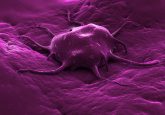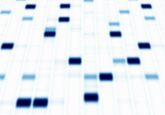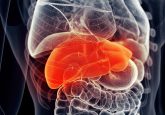Digital PCR technology enables precise and reproducible quantification of miRNA in plasma and serum
New assay method for quantification could help the development of miRNA and other nucleic acids as circulating biomarkers.
A recently published study has demonstrated that Droplet Digital PCR (ddPCR™; Bio-Rad, CA, USA) technology can be used to accurately quantify miRNA biomarker concentrations in serum over a number of days, something that has been challenging to reliably achieve in the study of plasma or serum samples with quantitative PCR (qPCR), due to high inter-day variability. Abundant in many different cell types, miRNAs may provide direct information about disease processes, and are currently being studied as blood-based biomarkers for cancer and a number of other diseases. Now, ddPCR will allow the study of serum miRNA biomarkers over the course of a disease.
“In the field of circulating miRNA diagnostics, ddPCR enables us to finally perform biomarker studies in which the measurements are directly comparable over across days within a laboratory and even among different laboratories,” commented Muneesh Tewari, associate member in the Human Biology Division at the Fred Hutchison Cancer Research Center (WA, USA), and lead author of the study. “We chose to use Bio-Rad’s QX100 ddPCR system because it was the first system on the market that could make digital PCR practical from a cost and throughput standpoint for routine use in the lab.”
In order to assess precision of each step (serial dilution, reverse transcription and preparation of PCR technical replicates) the scientists conducted nested analysis of ddPCR versus qPCR on cDNA from a dilution series of six different synthetic miRNAs in both water and plasma on three separate days. When compared with qPCR, the group found that ddPCR illustrated greater precision (48–72% lower coefficients of variation) with respect to PCR-specific variation. Subsequently, side-by-side comparison of qPCR to ddPCR for detecting miRNAs was performed. The group discovered that ddPCR improved day-to-day reproducibility sevenfold in comparison with qPCR.
Tewari concluded, “ddPCR will allow us to accurately follow serum miRNA biomarker concentrations over time during a patient’s treatments course, something that has been nearly impossible to achieve with real-time PCR.”
Source: Hindson CM, Chevillet JR, Briggs HA et al. Absolute quantification by droplet digital PCR versus analog real-time PCR. Nature Methods doi:10.1038/nmeth.2633 (2013) (Epub ahead of print); Droplet Digital™ PCR enables reproducible quantification of microRNA biomarkers.






